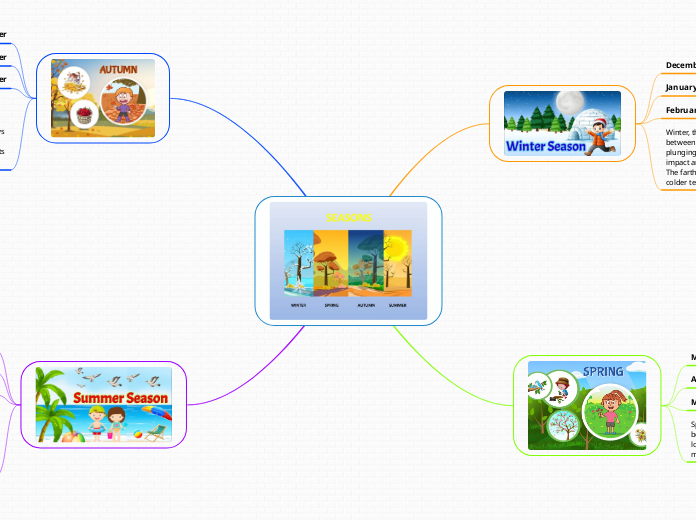

December
January
February
Winter, the coldest season of the year, comes between autumn and spring. It is associated with plunging temperatures and icy weather, but its impact and timing change according to location. The farther an area lies from the equator, the colder temperatures it experiences.

March
April
May
Spring is a time when flowers bloom and trees begin to grow and reproduce. The days grow longer and the temperature in most areas become more temperate.

September
October
November
Autumn (sometimes called fall) is one of the four seasons of the year and is the time of year that transitions summer into winter. Along with the tree leaves changing color, the temperature grows colder, plants stop making food, animals prepare for the long months ahead, and the daylight starts growing shorter.

June
July
August
Weather in the summer grows warmer, and in some areas, the heat translates to drier temperatures. This hot, dry time of year can lead to droughts, where water is in short supply. Heat waves, times of excessively hot weather that include spikes in temperature, can also occur during the summer.
